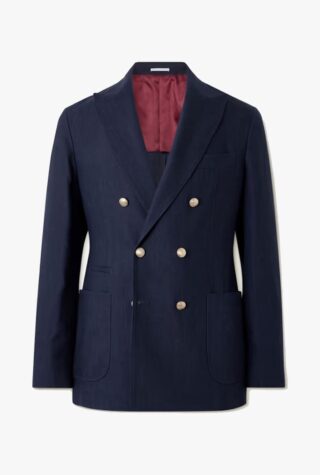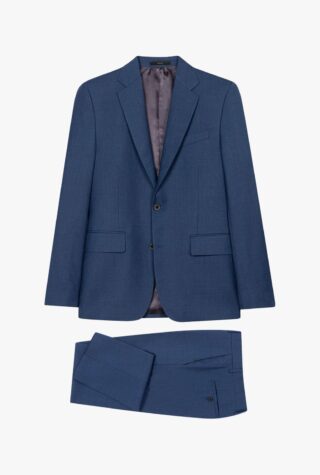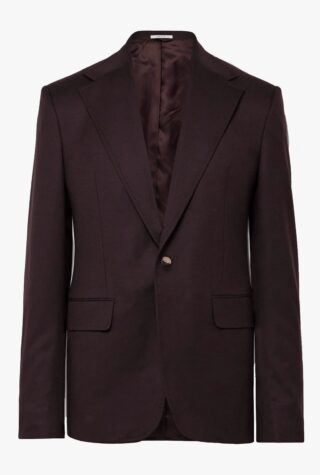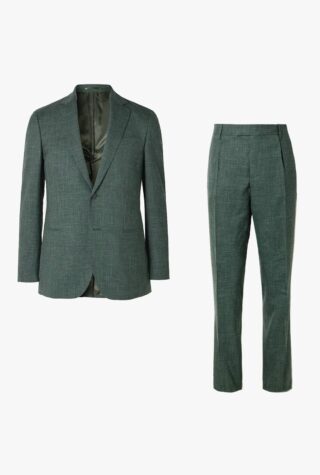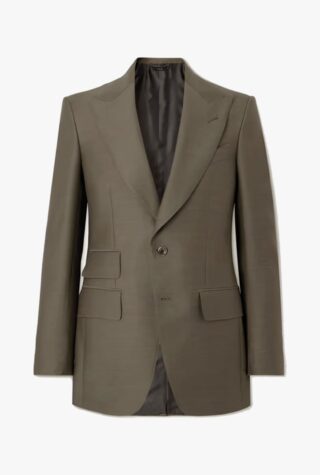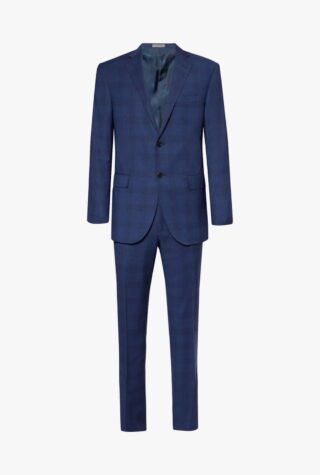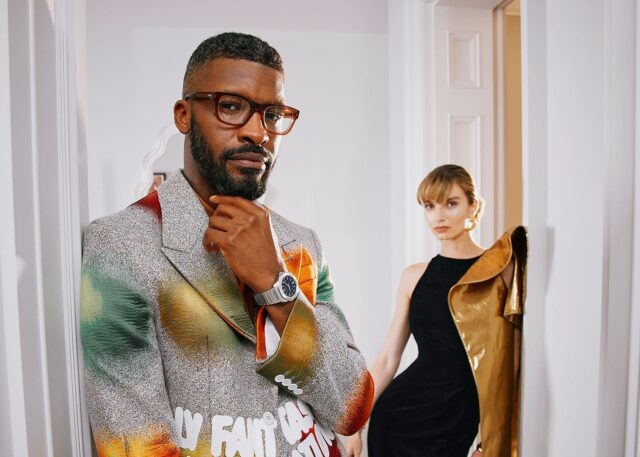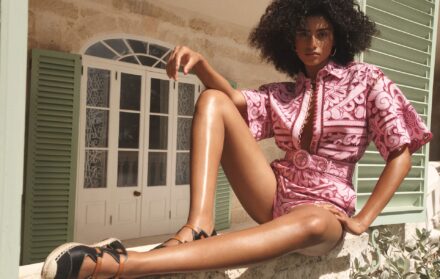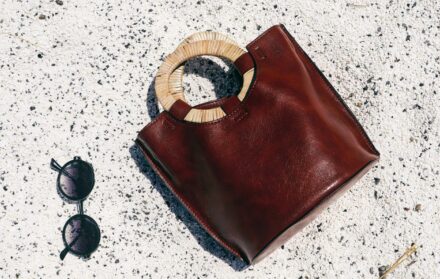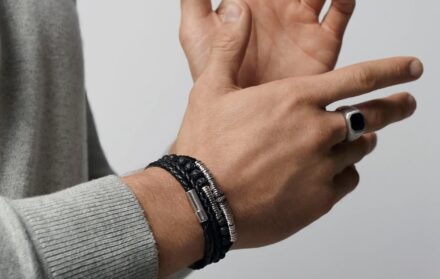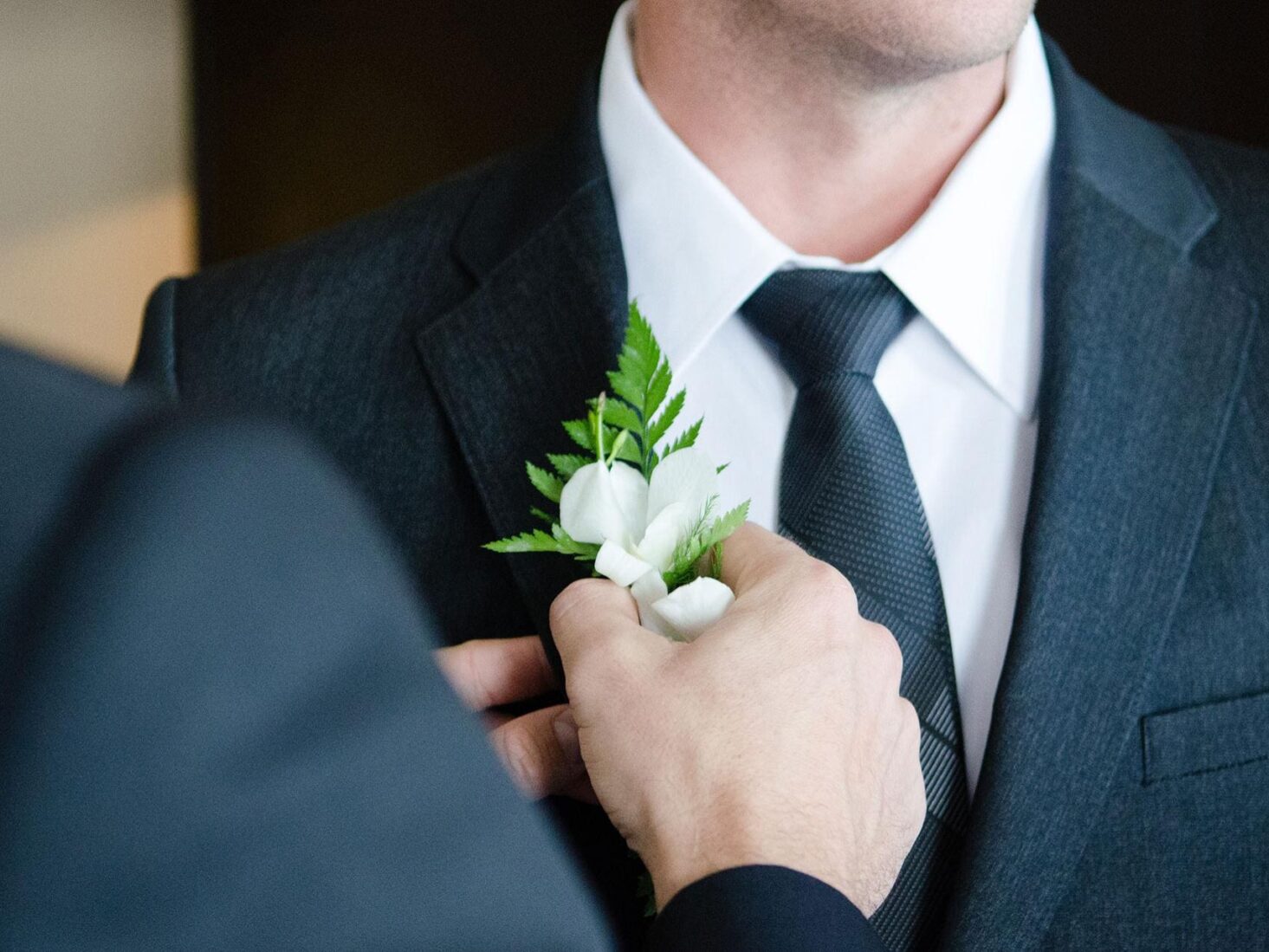
Wedding suits for men: The essential guide for grooms
Those wedding photos are going to stay with you forever so make sure you get your suit right
All products are chosen independently by our editors. Luxury London may earn commission on items purchased.
It may be the most important decision you make for your big day. Forget the venue and who’s actually attending. Forget the food and the vows. The biggest choice you have to make on your wedding day is a sartorial one. It’s all about the wedding suit.
Finding the right wedding suit is no easy feat. There are a number of factors to consider, from the location and venue of a wedding, to the dress code and what your partner will let you get away with. But with unlimited options for unlimited budgets, it can be tricky to know where to start. Wedding suits are big business after all – the global wedding wear market is set to be worth over $83.5 billion by 2030, and while only around a fifth of that is in relation to menswear, that’s still big bucks and one hell of a lot of suits.
So what do grooms need to look out for, and which brands should they keep an eye on? Here’s everything you need to know about buying wedding suits for men.
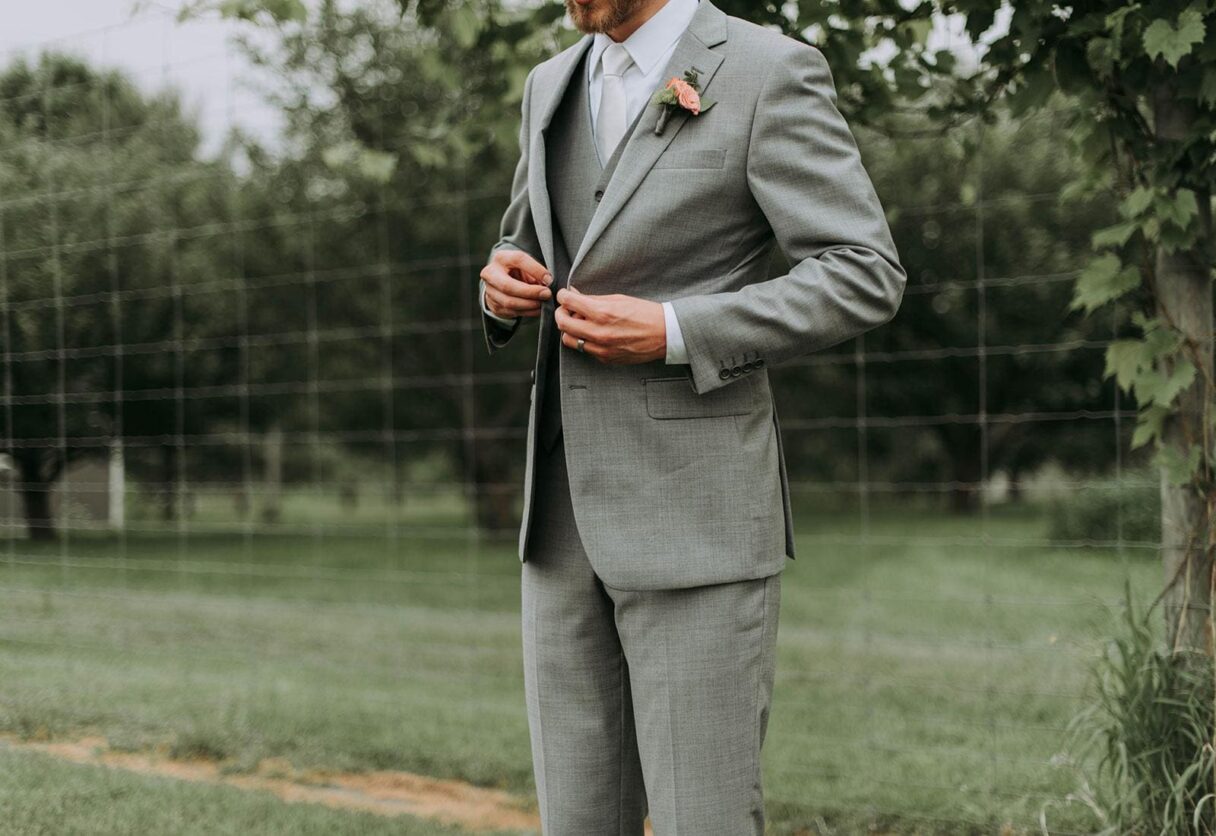
What to consider when buying a wedding suit
Does it really matter what you wear? Well, yes, in a word. Chances are you’ve hired a photographer for the day, and chances are they’re going to take a number of intimate photos that you’ll hold on to for (hopefully) quite some time. Do you really want to look back on said photos in 20 years’ time and become squeamish at the sight of your too-short, too-tight, brightly coloured three-piece? We thought not.
More often than not, it’s best to stick to the classics and focus on fit. This will ensure you look your best without making too much of a statement (unless that’s what you’re going for, of course). It is, after all, your partner’s day too – you don’t want to outdo them and all the effort they’ve put in. Price is, of course, also a big consideration but we’d generally advise spending as much on a suit as you can afford. As with most things, you tend to get what you pay for with tailoring, so stretch your budget if you can.
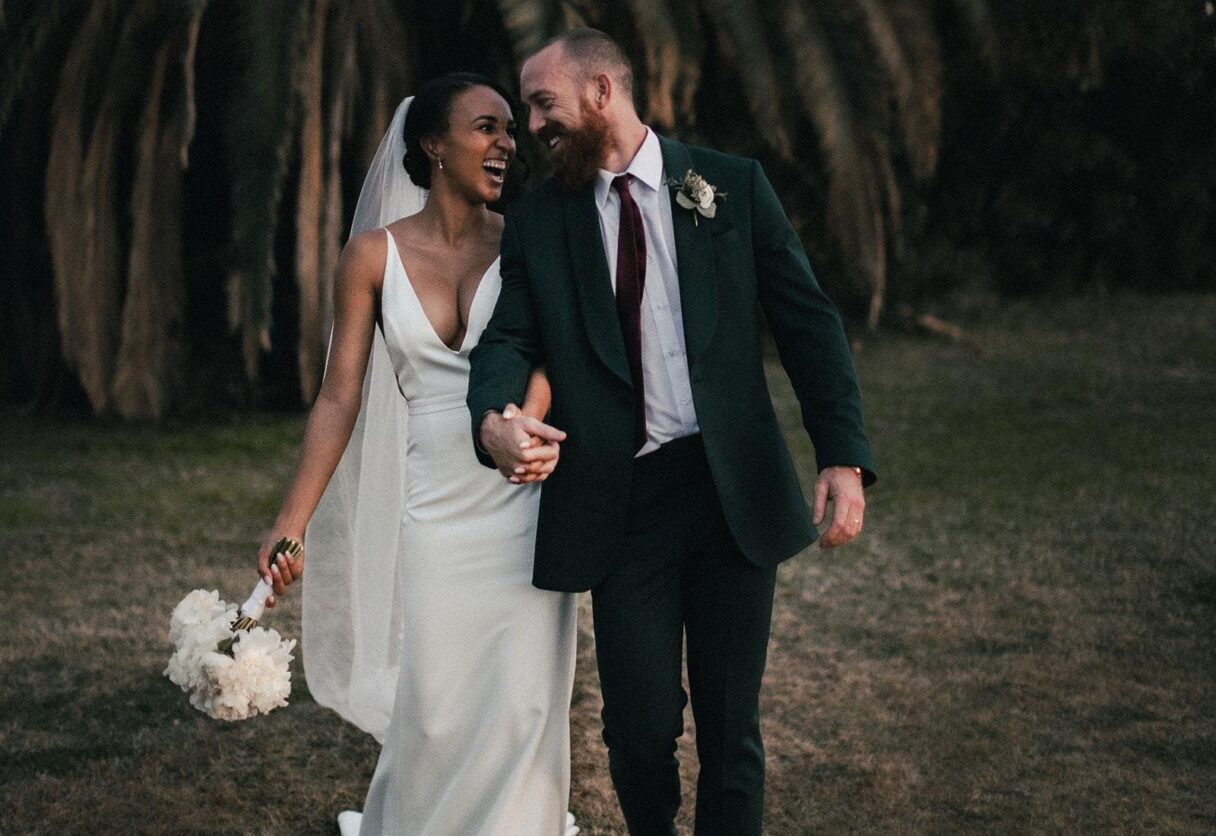
How should a wedding suit fit?
Fit is undoubtedly the most important aspect of buying any suit. If it doesn’t fit, it’s no good. But what is a good fit? Generally, most high street suits tend to be too slim. You know the type: estate agent blue, pulling across the middle, with low-rise trousers that show off a bare ankle. Not ideal.
Traditionally a suit, and indeed a wedding suit, should flatter your form without restricting movement. A well-fitting suit jacket shouldn’t be difficult to button up, and the trousers shouldn’t squeeze your thighs as you walk. You should feel comfortable in the suit’s cut – but let’s break it down a bit.
The shoulders are the most important part of a jacket’s fit. Virtually every aspect of a suit can be altered – from the waist to the sleeve length – but the shoulders can’t. The fit needs to be right here. The jacket’s shoulders should hug your own when worn over a shirt; they should finish at the end of your own shoulder line, ideally letting the arms of the jacket hang straight down in a clean line. Any sagging or bunching of the jacket’s shoulders is a clear indicator that it’s too big.
Length is another important factor. The arms should be short enough to show around an inch of shirt cuff and slim enough that there's no excess fabric around the cuff. The jacket length should be in proportion to the trousers. Ideally it should cover your behind, while being short enough to let the trousers elongate your silhouette. Which brings us to the bottom half.
You should probably go wider with trousers than you think. Unless you boast exceedingly slim legs, most body shapes benefit from a pair of mid-to-high-rise trousers with a tapered leg. That is, a slightly wider cut at the thigh, which subtly slims to a narrower opening at the hem. Trousers should finish just above your shoes, leaving a clean unbroken line down to the foot.
What colour should a wedding suit be?
When it comes to colour, you can’t go wrong with a navy blue wedding suit. It’s the default option: less business-like than grey, it suits all skin tones, is flattering to most body shapes and is just plain easy to wear. But what if you want to push the boat out a bit and drift away from the norm? Look to subtle patterns and checks, which instantly make a suit more interesting.
The trick is not to go too loud, especially if you’re used to wearing only solid colours. A micro houndstooth or check in brown tones is a good place to start. Brown is an underrated colour when it comes to tailoring and will make you stand out as the groom without shouting about the fact. Gabriela Hearst's single-breasted suit jacket is a great example; cut in a wool-twill blend, its sharp silhoeutte and neutral palette ensure it’s worthy of consideration.
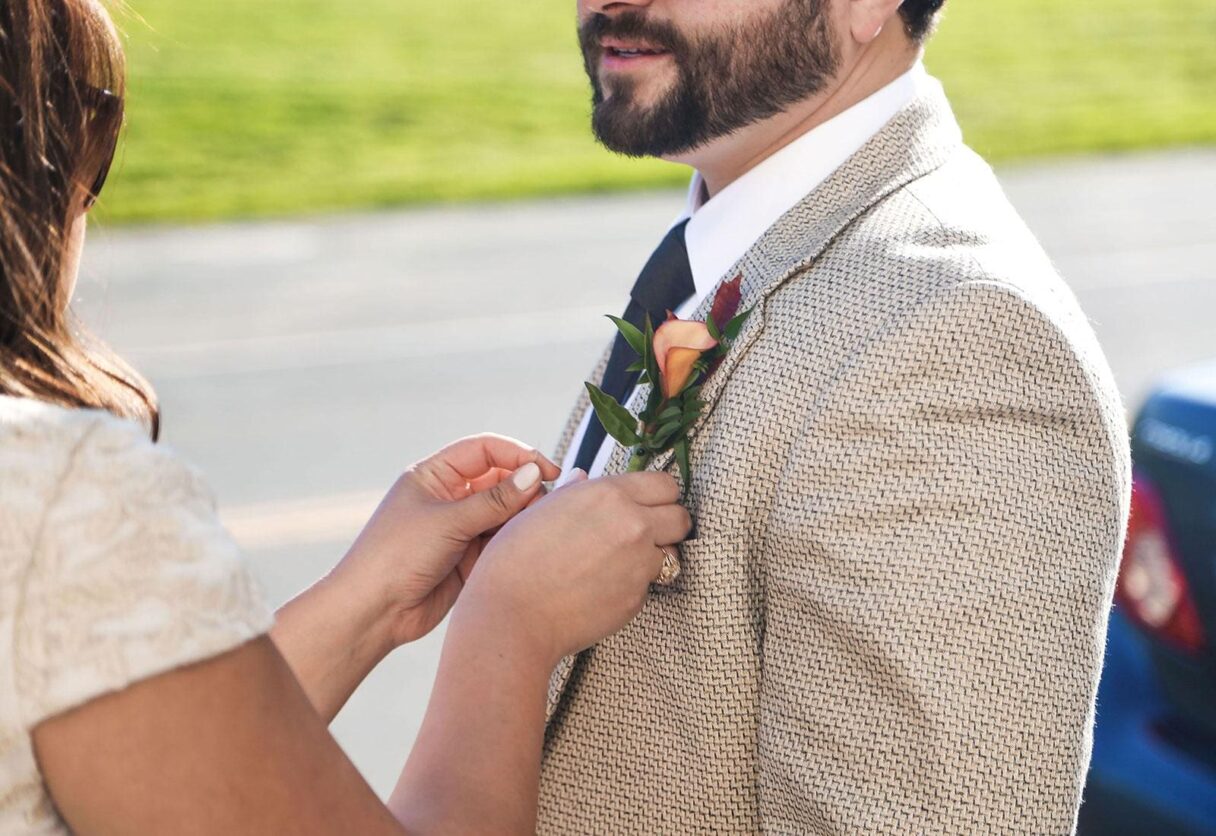
For summer weddings specifically though, and depending on what your partner is wearing, you may want to experiment further. Brightly coloured suits should largely be avoided, but a mid or dark green is a great shout. Look for one in linen with slit pockets, and soft, Italian-style shoulders, like this one from Mr. P, and you’ll be on to a winner.
Which suit fabric is best?
Fabric choice often gets overlooked when it comes to wedding suits, yet it’s arguably the most important aspect of tailoring. Fabric largely dictates how warm or cold you’ll be: for summer you’ll want lightweight wool, linen or cotton, whereas with winter it’s all about heavy wools, cashmere-blends and tweeds.
It’s worth noting that lighter weight fabrics like linen and cotton will crease more easily. This puts some people off but it shouldn’t – the natural creasing gives the suit character and is all part of the fabric’s charm. It also means they’ll be on the more casual end of the tailoring spectrum, so if your wedding is a more formal affair or you’re going for full tails, it may be best to stick to traditional wool.
At the higher end of the market are silk-blend jackets, which are incredibly soft yet give a bit more structure to linen or cotton. Tom Ford's olive example is undeniably pricey, but looks the part with its subtle weave and soft Italian construction. Corneliani’s slightly less eye wateringly priced take is cut from 100 per cent virgin wool and has been given a subtle contrast check treatment. It’s a bolder look but one that can be worn after your wedding and dressed down with surprising ease. And let’s face it, if you’re going to be spending big on a wedding suit, why not go for one you’ll want to actually wear in the months and years following? That could be the best wedding suit advice of all.
Read more: The most extravagant celebrity weddings to inspire your big day
